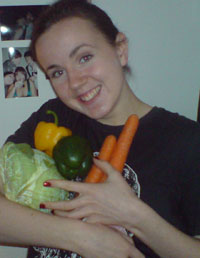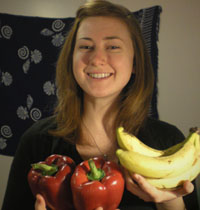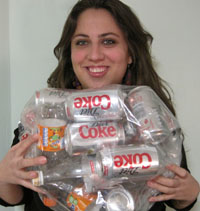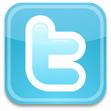Food and Drink
Anna
For my challenge I gave myself the task of trying to buy only local produce. I planned to use markets and food halls, and this worked really well for fruit and vegetables. However, I did find it difficult to ensure that the meat I bought was locally-reared. It has been a really interesting experience, and I’ll definitely continue to take more notice of where my food comes from in the future!
Find out what object from the exhibition inspired this challenge!
Helen
 For my challenge I decided to become a vegetarian. I was inspired to try this when I found out that meat production uses a large amount of energy, with some studies saying that producing 2.2lbs of beef uses enough energy to power a 100w light bulb for twenty days. The challenge proved very difficult, but since switching back to meat I’ve managed to cut down my consumption of it. I’m now very happy to eat more meat-free meals so I can help save some energy!
For my challenge I decided to become a vegetarian. I was inspired to try this when I found out that meat production uses a large amount of energy, with some studies saying that producing 2.2lbs of beef uses enough energy to power a 100w light bulb for twenty days. The challenge proved very difficult, but since switching back to meat I’ve managed to cut down my consumption of it. I’m now very happy to eat more meat-free meals so I can help save some energy!
Find out what object from the exhibition inspired this challenge!
Sheila
 For my eco-challenge I stopped buying food that came in packaging. This was in reaction to the amount of non-recyclable plastic wrapping that I noticed in my grocery basket. Working with fresh ingredients tested my creativity and cooking skills! The challenge also made me more aware of the need to reduce my waste, and really improved my diet. For these reasons, I’m planning to continue buying as little packaged food as possible.
For my eco-challenge I stopped buying food that came in packaging. This was in reaction to the amount of non-recyclable plastic wrapping that I noticed in my grocery basket. Working with fresh ingredients tested my creativity and cooking skills! The challenge also made me more aware of the need to reduce my waste, and really improved my diet. For these reasons, I’m planning to continue buying as little packaged food as possible.
Find out what object from the exhibition inspired this challenge!
Carolina
 For my challenge I decided to stop drinking canned and bottled drinks for two weeks. Instead, I drank only tap water or tea. I chose this challenge because 5 billion cans are produced every year just in the UK. Most families throw away 40kg of plastic every year. In only two weeks I avoided using more than 50 cans and plastic bottles, and I saved more than £40.
For my challenge I decided to stop drinking canned and bottled drinks for two weeks. Instead, I drank only tap water or tea. I chose this challenge because 5 billion cans are produced every year just in the UK. Most families throw away 40kg of plastic every year. In only two weeks I avoided using more than 50 cans and plastic bottles, and I saved more than £40.
 For my eco-challenge I helped to cultivate an allotment, growing fruit and vegetables. Because of the time of year, most of the work was based around making preparations for the next growing season (rough digging the ground and adding manure, deciding on which foods to grow this year, marking out areas for different crops etc.). I collected suitable kitchen waste, and used it to make compost. I also started growing a range of herbs at home for use in cooking. Working on an allotment is relaxing and very good exercise! It helps the environment and saves you money. I intend to continue cultivating an allotment in the future.
For my eco-challenge I helped to cultivate an allotment, growing fruit and vegetables. Because of the time of year, most of the work was based around making preparations for the next growing season (rough digging the ground and adding manure, deciding on which foods to grow this year, marking out areas for different crops etc.). I collected suitable kitchen waste, and used it to make compost. I also started growing a range of herbs at home for use in cooking. Working on an allotment is relaxing and very good exercise! It helps the environment and saves you money. I intend to continue cultivating an allotment in the future.
Find out what object from the exhibition inspired this challenge!
footprints@ncl.ac.uk ©University of Newcastle Date March 2010
